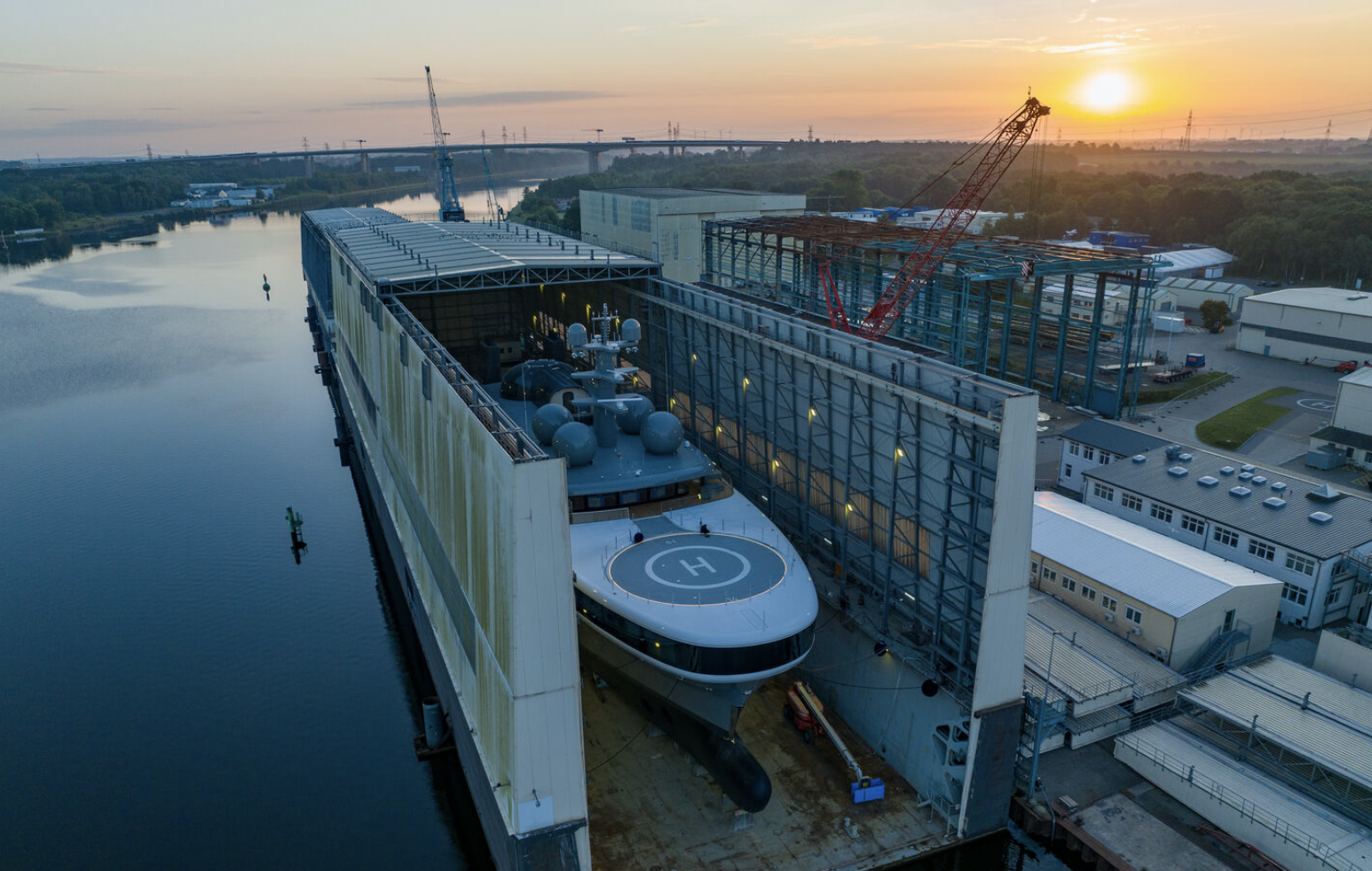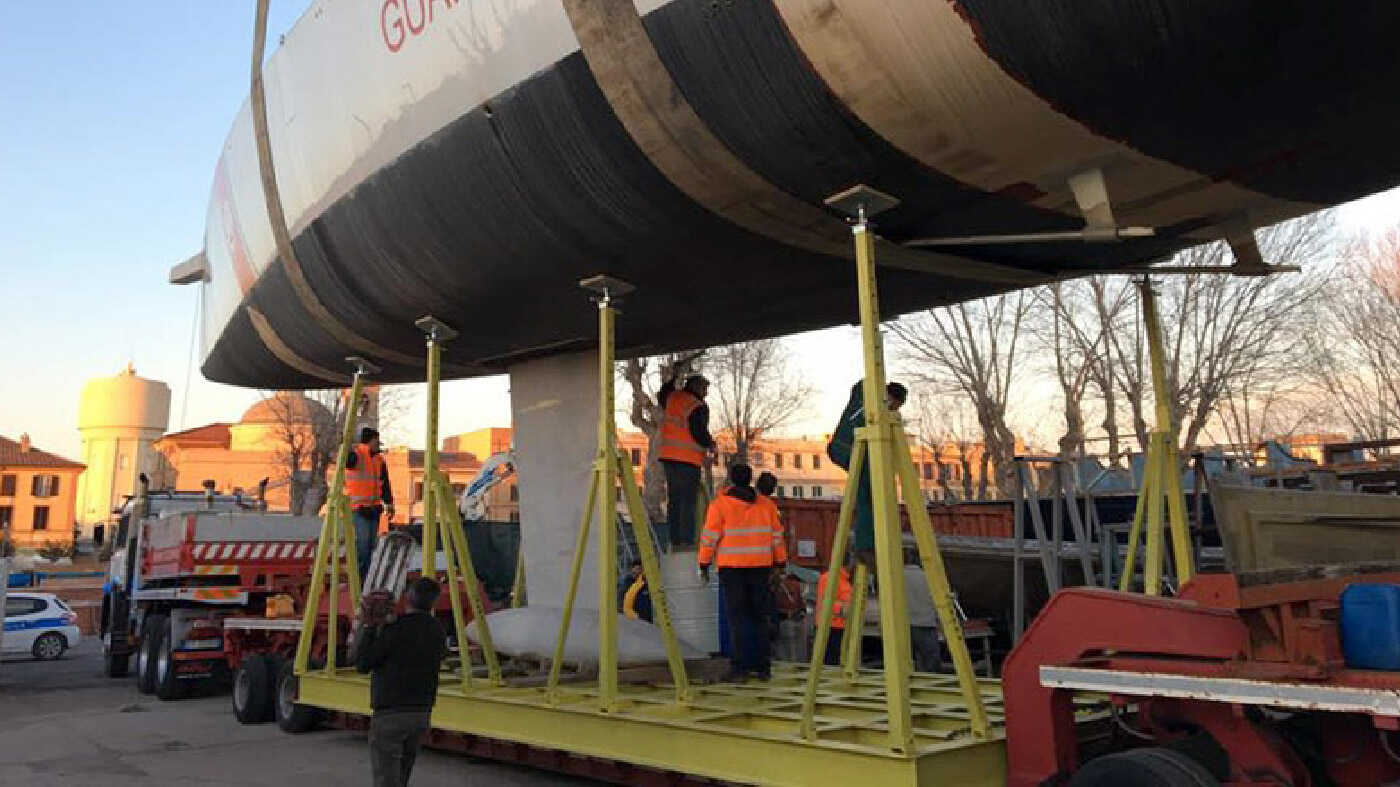First Look: 114m Lürssen fuel-cell superyacht Project Cosmos prepares for launch

The shed of the 114.2-metre Lürssen superyacht Project Cosmos has been opened as the yacht prepares to launch from the Lürssen Rendsburg shipyard in Germany. Also known as Project 13759, she is the first Lürssen superyacht to feature fuel-cell technology.
Photo: Steffen Mayer
Advertisement
“Fuel cells have very little maintenance and are more efficient than a diesel engine, which is already a very efficient way to produce power,” commented Peter Lürssen when the yard first announced the technology in 2021.Project Cosmos was first seen out of the shed in March 2023 when she was technically launched from Lürssen’s facility in Rendsburg, Germany. Project Cosmos was then seen in Kiel, Germany during her transfer for outfitting, before being transferred back to Rendsburg for final outfitting.
Project Cosmos boasts a sleek, futuristic profile designed by Apple watch developer Marc Newson. Her bold and streamlined exterior is distinguished by a rounded glass observation pod at her bow, with extensive black glazing accentuating her elegant, flowing lines.

Composed with a steel hull and aluminium superstructure, the first renderings reveal a vast and uncluttered foredeck, designed to accommodate a helipad, alongside a spacious aft deck fitted with a swimming pool. As well as this, a distinctive cut-out section on her aft deck hints at storage for a substantial tender or additional watercraft. Contrasting dark elements enhance her clean, sculpted silhouette, while a generous use of glass provides guests with a close connection to the surrounding seascape. Project Cosmos features an estimated interior volume of around 6,300 GT and a beam of 18 metres.

Project Cosmosis powered by a pioneering methanol-powered fuel cell propulsion system. The technology comprises stacks of fuel cells formed from bipolar plates and membrane electrode assemblies. This enables the motor yacht to operate with zero emissions at anchor for up to 15 days, or undertake slow-speed cruising for around 1,000 nautical miles. Her fuel systems meet stringent maritime regulations and are integrated with the methanol supply, ventilation, and electrical infrastructure.



